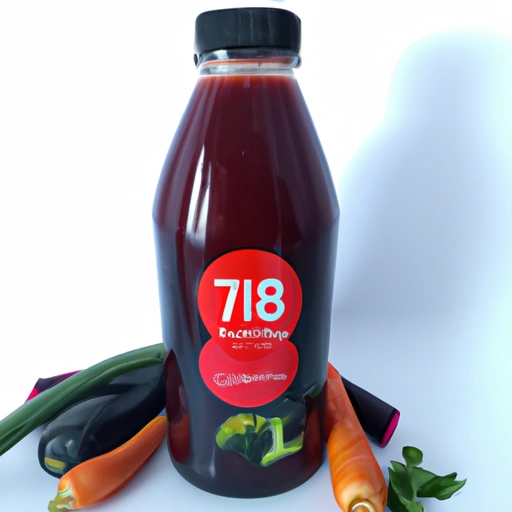V-8
Description

V-8 is a well-known brand of vegetable juice that comprises a blend of eight different vegetables. It is a versatile ingredient that can be used both as a drink on its own and as an addition to various recipes. V-8 is valued for its nutritional content, including an assortment of vitamins and minerals derived from the mix of vegetables. In recipes, it offers a rich, savory base that can enhance the flavors of a dish, whether you're cooking in ounces and cups (American units) or milliliters and grams (European and Azjan units).
Common uses
V-8 is commonly used as a nutritious drink, often served chilled and sometimes with a dash of salt, pepper, or Worcestershire sauce for extra flavor. It is also a popular ingredient in mixed alcoholic beverages, most notably the Bloody Mary cocktail. However, its uses extend beyond beverages into the culinary realm where V-8 stands as a versatile component in soups, stews, marinades, and sauces.
Nutritional value
Calories
V-8 is relatively low in calories, making it a diet-friendly addition to meals. An 8-ounce (approximately 240 milliliters) serving typically contains about 50 calories.
Protein
While not high in protein, V-8 can contribute a small amount to one's daily protein intake, generally offering about 1 to 2 grams per serving.
Fat
V-8 is virtually fat-free, with less than 0.5 grams per serving, which makes it a heart-healthy choice for those monitoring fat consumption.
Carbohydrates
The juice contains about 10 grams of carbohydrates per 8-ounce serving, mainly from the natural sugars present in the vegetables.
Vitamins
V-8 is an excellent source of vitamin A and vitamin C, while also providing some levels of other vitamins such as vitamin E and vitamins from the B-complex.
Minerals
It provides a range of minerals including potassium, magnesium, and iron, contributing to various bodily functions and overall health.
Health benefits
V-8 juice is rich in antioxidants and nutrients that can support immune health, improve digestion, and may lower blood pressure. The blend of vegetables ensures a good intake of dietary fiber, though the juice form may have less fiber than whole vegetables. Regular consumption of V-8 can contribute to the overall vegetable intake recommended for a balanced diet.
Potential risks
While V-8 is healthy, it can contain added sodium, which may be a concern for those with hypertension or those who are watching their salt intake. Some people may also prefer to avoid the added sugars found in certain varieties of V-8.
Common recipes
V-8 juice can be used in a variety of recipes including soups like tomato or minestrone, stews, chili, and even in braising liquids for meats. It is also a common ingredient in vegetable smoothies and can be used to make a tangy salad dressing.
Cooking methods
This juice can be used in simmering, boiling, or slow-cooking methods, acting as a liquid base that infuses dishes with a rich vegetable flavor.
Pairing with other ingredients
V-8 pairs well with herbs and spices such as basil, oregano, and thyme. It complements proteins like chicken, beef, and tofu, and can be used to hydrate grains such as rice or quinoa.
Summary
V-8 vegetable juice is a nutritious and convenient ingredient favored for its versatility in beverages and culinary applications. It packs a flavorful punch with a combination of eight vegetables, providing significant health benefits. However, consumers should be mindful of the sodium and sugar content in certain varieties. Overall, V-8 is a valuable addition to kitchens worldwide, suitable for a wide range of recipes and enjoyed in both American and European units of measurement.